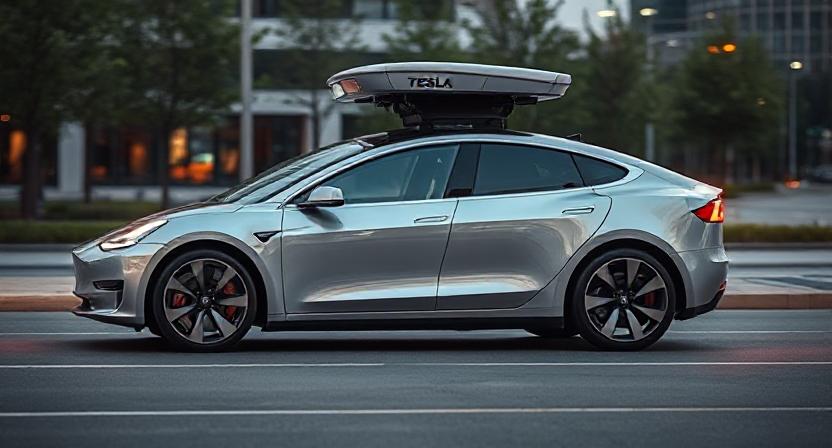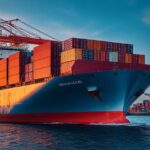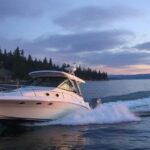Tesla Robotaxi is now real. It’s not just a promise. On June 22, 2025, Tesla launched its first robotaxi rides in Austin, Texas. The cars are driverless and running on real roads. This marks Tesla’s biggest step yet in self-driving tech.
Tesla Robotaxi Is Finally Here
These robotaxis are not open to everyone yet. Right now, they’re being tested with a small group. But it’s clear—Tesla Robotaxi has moved from talk to action.

What Is Tesla Robotaxi?
Tesla Robotaxi is a ride service with no driver behind the wheel. The cars drive themselves using cameras and AI. Tesla doesn’t use radar or lidar like other companies. Instead, the system is trained to “see” with cameras only.
The Austin launch uses modified Tesla Model Y cars. These vehicles are packed with Tesla’s Full Self-Driving (FSD) system. Tesla calls this a Level 4 system, which means the car can drive itself most of the time.
Where and How It’s Running
The Tesla Robotaxi pilot is happening in a small part of Austin. Riders were invited, and many are Tesla fans and influencers. The rides follow set routes and avoid tricky roads, highways, and bad weather.
Each ride costs $4.20, a flat fee for now. That price may change later. The service runs from morning to midnight.
There’s still a human “safety monitor” sitting in the front seat. This person is not driving but can stop the car if needed. Some vehicles also have chase cars following behind for extra support.
Tesla Robotaxi vs Other Self-Driving Cars
Tesla is not the first to launch robotaxis. Companies like Waymo and Cruise have been doing it for years. But Tesla is taking a different path.
Waymo uses lidar sensors and detailed maps. Tesla skips those. Tesla Robotaxi relies on cameras and AI. This makes the system cheaper but also harder to get right.
Waymo is running in places like Phoenix and San Francisco. It has given over a million paid rides. Tesla Robotaxi is far behind in numbers but catching up fast.
Why Austin?
Tesla picked Austin for good reasons. The company has a major factory nearby. The roads are easier to manage. Texas laws also support self-driving tests more than other states.
This helps Tesla avoid many of the rules that slow down robotaxi testing elsewhere. Texas passed new laws for robotaxis in 2025. Tesla must follow those, but they’re more flexible than in places like California.
How Safe Is Tesla Robotaxi?
Tesla says its robotaxi is safe, but it’s still under watch. The safety monitor is there just in case. Additionally, Tesla has a remote support team ready to assist if the car requires help.
The current rides avoid hard-traffic zones. They avoid busy highways and don’t run in heavy rain. So, the Tesla Robotaxi system is still learning.
What Makes Tesla Robotaxi Special?
The main difference is how Tesla builds and trains its system. Tesla trains the AI using real-world driving from millions of cars. This gives it a huge library of data to learn from.
Other companies rely more on test zones and controlled maps. Tesla goes the other way—more real driving, fewer maps.
Also, Tesla wants to build a custom robotaxi car. Elon Musk calls it the Cybercab. It will have no steering wheel or pedals. That model is planned for 2026.
Can Tesla Robotaxi Go Nationwide?
Not yet. Right now, Tesla Robotaxi is a test in one small city zone. To go wide, Tesla must pass many safety tests and get permits in other states.
Also, Tesla needs to prove the system works without close human help. Getting from this pilot to a nationwide service will take time.
Elon Musk has said he wants a million robotaxis on the road. That sounds huge, but it’s still a long road to get there.
What Does This Mean for Tesla and Its Stock?
Investors are watching Tesla Robotaxi closely. If the service grows fast, Tesla could earn billions from rides. It could even rival companies like Uber.
But there’s a risk. If the robotaxis cause crashes or gets banned in some states, the plan may slow down.
For now, the stock is reacting well. Many investors believe Tesla Robotaxi will grow in value.
What’s Next for Tesla Robotaxi?
Tesla plans to roll out more test zones. Cities like Miami and Los Angeles are likely next. The company will watch how the Austin test goes before expanding.
The big step will be the launch of the Cybercab in 2026. That’s when Tesla hopes to remove the safety monitor completely. A car with no steering wheel will show that Tesla Robotaxi is fully ready.
Final Thoughts: Tesla Robotaxi Is Real and Rolling
Tesla Robotaxi is no longer just an idea. It’s now on the streets, taking real passengers, and charging real money. That’s a big step for Tesla and the self-driving future.
There are still many things to fix. The tech must get better. The laws must support the service. And people must trust the cars.
But one thing is clear—Tesla Robotaxi is on the move. The future of ride services might soon be without drivers.





